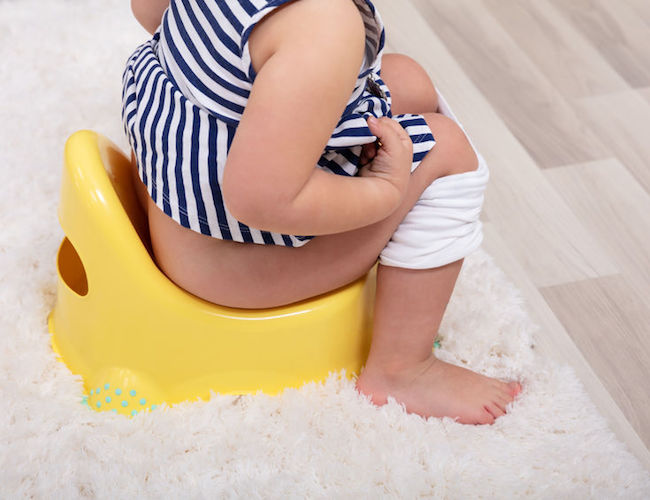How do I start potty training my toddler?
If you’re ready to ditch the nappies, follow this paediatrcian-approved approach.
No more nappies! It’s the milestone many parents are most eager to reach. But starting before your toddler is physically or emotionally ready will only draw out the process and make everyone frustrated.
So when should you start?
There’s a wide range of normal here – and culture also plays a role – but most children will show readiness to start potty training, and complete the process, between the ages of two and three years. “I normally recommend that potty training is started after the age of two years,” says Cape Town-based paediatrician Dr Hanneke Heyns.
Experts typically advise waiting for the following signs before taking off that last nappy.
-
Your toddler’s nappy stays dry for a couple of hours and they wake up dry most mornings.
-
Bowel movements tend to come at about the same time every day and your child is aware of the urge to go. They might not be able to tell you so in words, but they’ll make certain expressions or grunting sounds that demonstrate awareness.
-
They understand basic words and concepts, such as wet and dry, and can follow basic instructions, such as come, go and bring.
-
They are able to communicate their needs to you in gestures or words (even if only you understand what they mean).
The 3-day no-nappy challenge
“There are different methods, and I suggest that if the child is at school and they are doing potty training there, the guidelines from the school should be reinforced at home as well,” says Dr Heyns.
As for actually making the leap, Dr Heyns recommends what she calls the ‘3-day no-nappy challenge’. Essentially, this entails a parent doing nothing but being with, and observing, their child 24/7 for three days. You should be wholly devoted to the task at hand – no cooking, cleaning or any other tasks during the 72-hour period. You play with your child and do absolutely everything together while watching carefully for ‘learning opportunities’.
“On the morning of the first day, you remove your child’s nappy with a big fanfare, saying, ‘You are now a big boy or girl, we are not going to wear nappies again!’,” says Dr Heyns. Then dress your child in underwear and a shirt. Make sure you have plenty of spare underwear.
Create learning opportunities by offering your child lots of fluids (significantly more than they would normally drink). “The idea is that every time your child starts passing urine – and the first wet spot appears on their underwear – you pick them up, run to the potty and put them on it,” explains Dr Heyns. “Every time there is even a little drop in the potty, the child gets a reward like a sweet or little toy. By the end of the three days, the child is potty trained.”
IMAGE CREDIT: 123rf.com



